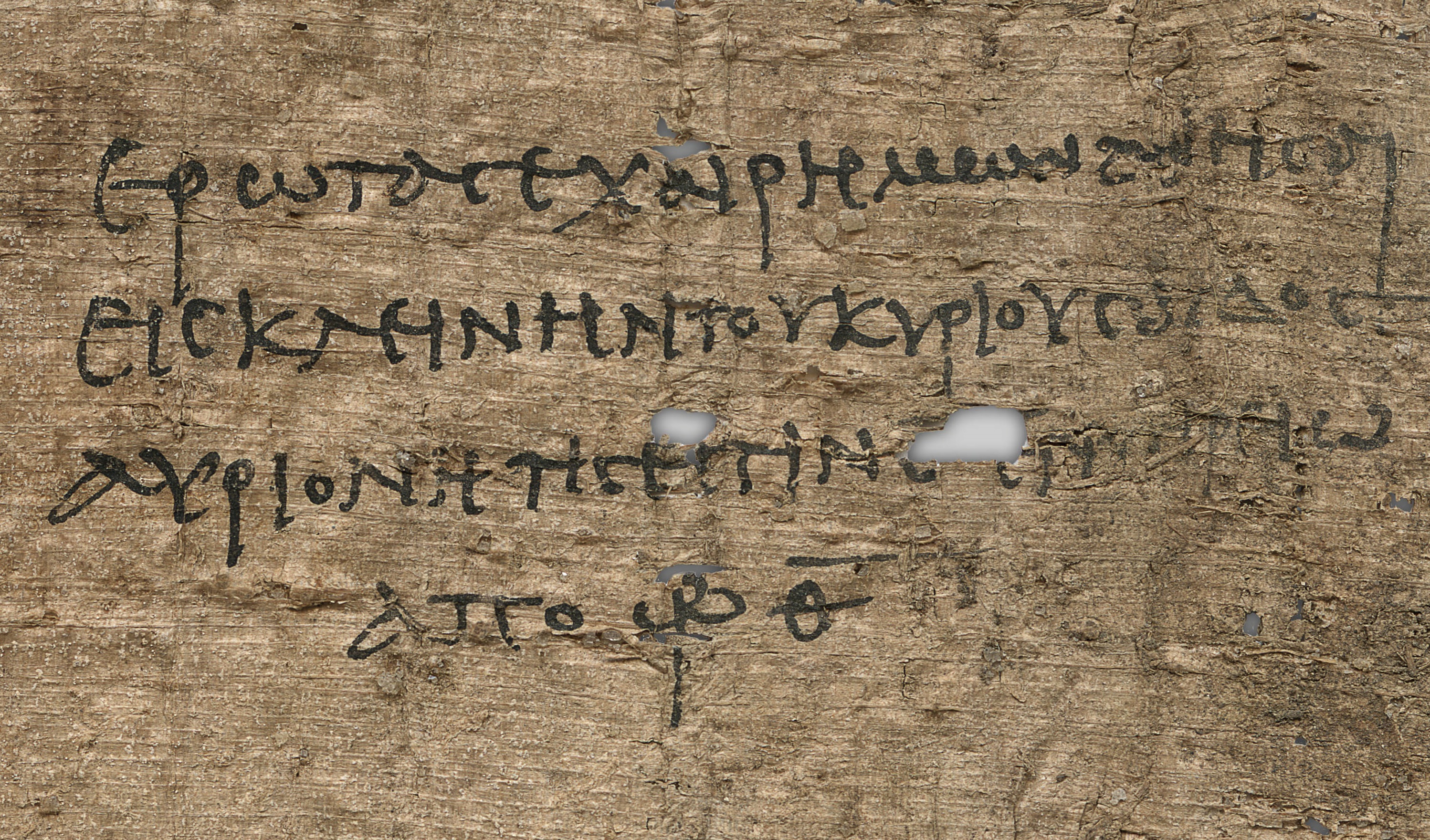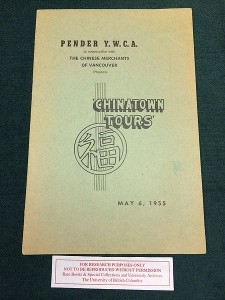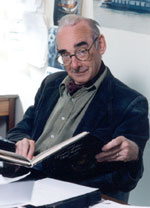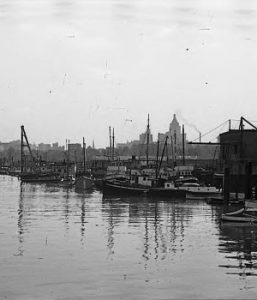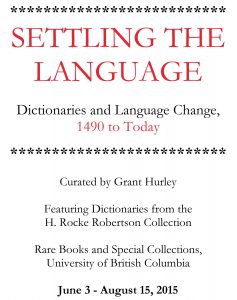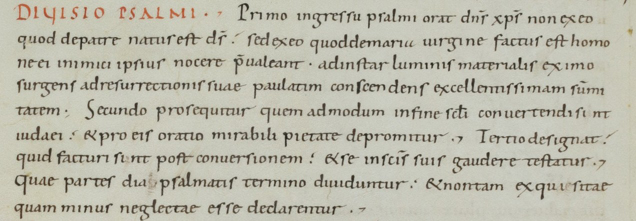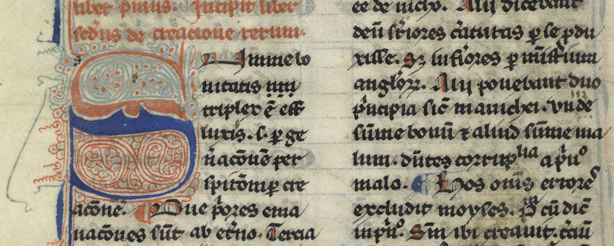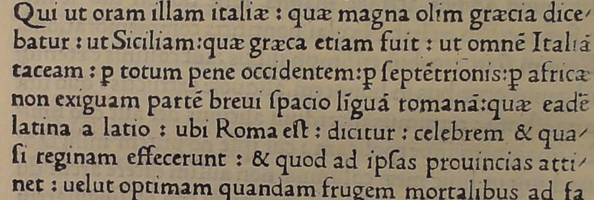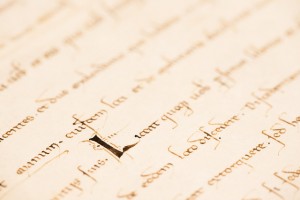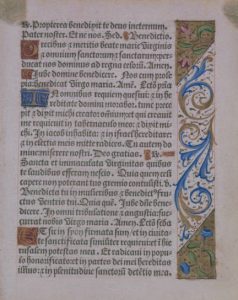RBSC mentioned on CBC’s Windsor Morning
Posted on February 28, 2017 @2:41 pm by cshriver
More great press on our papyri from Roman-age Egypt! Professor Max Nelson, who earned his Ph.D. at UBC and is now an Associate Professor at the University of Windsor, was interviewed on the CBC program Windsor Morning about the papyri. Professor Nelson is currently collaborating on an article about the papyri with UBC’s own Professor C. W. (Toph) Marshall. Enjoy the interview here!
No CommentsPosted in Announcements, Collections, Uncategorized | Tagged with
RBSC on Global News
Posted on February 28, 2017 @2:41 pm by cshriver
Global News watchers may have been pleasantly surprised to see our own Katherine Kalsbeek, acting head of Rare Books and Special Collections, on T.V. yesterday evening. Two pieces of papyri dating back to Roman-age Egypt about 1,800 years ago that had previously been uncatalogued have now been rediscovered by UBC scholars, and Global News was as excited about it as we are! The papyri scraps consist of a reminder for a dinner invitation and a letter from a young man to his mother; both are written in Greek. You can read more about the rediscovery of these great pieces in the RBSC collection and watch the coverage on Global News.
No CommentsPosted in Announcements, Collections, Uncategorized | Tagged with
Book Blogs: Chinatown Tours
Posted on June 19, 2015 @4:53 pm by cshriver
Happy Friday! Time for the third in a series of blog posts that celebrate the “Book Blogs” created by students in Professor Siân Echard’s “The History of the Book” course during the spring 2015 term. For this assignment, students in the class were asked to choose an item (book or otherwise) from RBSC, research its history, and introduce it to a public audience through a blog.
This week, Jane Shi takes a look at a booklet produced in 1955 by the Pender Y.W.C.A. in cooperation with Chinese Merchants of Vancouver: Chinatown Tours.
http://wiki.ubc.ca/Course:ENGL419/Books/Chinatown_Tours
Enjoy Jane’s thorough analysis of this deceptively simple little pamphlet.
No CommentsPosted in Collections, Research and learning, Uncategorized | Tagged with assignments, book blogs
RBSC remembers Leonard Guy McCann
Posted on June 19, 2015 @2:06 pm by cshriver
This past spring, Rare Books and Special Collections at UBC Library lost a dear friend, and Vancouver’s museum, historical, and archival communities lost a leader. Leonard Guy McCann, who was curator of the Vancouver Maritime Museum for 45 years, and a contributor to our own collections, passed away in late March at the age of 88. We would like to share Stephen Hume’s lovely farewell in the Vancouver Sun in celebration of Len’s life and legacy.
No Comments
Posted in Announcements, Collections, Uncategorized | Tagged with
Book Blogs: 15th-Century Gradual
Posted on February 28, 2017 @2:41 pm by cshriver
It’s Friday afternoon…time for the second in a series of blog posts that celebrate the “Book Blogs” created by students in Professor Siân Echard’s “The History of the Book” course during the spring term. For this assignment, students in the class were asked to choose an item (book or otherwise) from RBSC, research its history, and introduce it to a public audience through a blog.
This week, Tessa Cernik explores fragments from a 15th-century Italian gradual.
http://blogs.ubc.ca/italiangradualleaves/
Sing along if you know the words!
No CommentsPosted in Collections, Research and learning, Uncategorized | Tagged with assignments, book blogs
New exhibition: Settling the Language
Posted on June 5, 2015 @8:43 am by cshriver
We’re very excited to welcome a new exhibition to Rare Books and Special Collections!
The exhibit, Settling the Language: Dictionaries and Language Change, 1490 to Today, is being mounted in support of the Dictionary Society of North America and Studies in the History of English Language conferences being held at UBC from June 5 to 7. The exhibition, curated by Grant Hurley, an MAS/MLIS student at SLAIS, will run until August 15.
Featuring items from the H. Rocke Robertson Collection of Dictionaries and other materials at RBSC, the exhibit celebrates the many forms of dictionaries. It includes 32 items, from early Latin and polyglot dictionaries, to the vital materials for Indigenous language revitalization, which all work in curious and contradictory ways to both fix, or settle a language. Brought together by the immense work of H. Rocke Robertson and other donors to RBSC’s collections, we hope you will enjoy the complicated and fascinating tales these texts tell us about our languages, identities, and linguistic ancestors. You can download the exhibition catalogue here.
You can visit the exhibition, which is free and open to the public, Monday through Friday, 10 a.m. to 4 p.m. at Rare Books and Special Collections on the first floor of the Irving K. Barber Learning Centre. For more information, please contact Rare Books and Special Collections at 604 822-2521 or rare.books@ubc.ca.
No Comments
Posted in Exhibitions, Uncategorized | Tagged with
Book Blogs: The Family Dictionary
Posted on February 28, 2017 @2:42 pm by cshriver
This past spring term, Rare Books and Special Collections hosted more classes than we have ever before! We welcomed classes from a wide variety of disciplines, including English; history; medieval studies; archival studies; art history; geography; French; gender, race, sexuality and social justice; and Asian studies. In addition to hosting single-session class visits, a few classes met regularly at RBSC, including Professor Greg Mackie’s “Fraudulent Texts: Literary Forgeries and Creative Deceptions” and Professor Siân Echard’s “The History of the Book.” We love hosting classes, as it allows us to introduce that many more students to our amazing collections. And it’s wonderful to see the interesting materials, some of which are new even to us, that professors select for the classes. But we especially love to see the results of the students’ work with our collections and the incredible insights they bring to their topics. Now we’re very happy to share some of this great student work with you!
One of the assignments for Professor Echard’s course, “The History of the Book,” was a “Book Blog.” Students were asked to choose an item (book or otherwise) from RBSC, research its history, and introduce it to a public audience through a blog. We have thirteen of these student blog projects to share with you over the next several weeks. We hope you enjoy them and will perhaps be inspired to stop by RBSC to see one of the objects for yourself!
First up: Elysse Bell’s blog about William Salmon’s The Family Dictionary
http://blogs.ubc.ca/ahistoryofabook/
Maybe you’ll try your hand at “Salmon Frigassed” this weekend. Don’t forget the sippets!
No CommentsPosted in Collections, Research and learning, Uncategorized | Tagged with assignments, book blogs
The Changing Written Word
Posted on May 22, 2015 @10:22 am by cshriver
In honour of our new exhibition, Papal Parchments and Blackletter Books, here’s a lesson on the history of the written word and why the text you’re reading now looks the way it does. Thanks so much to the exhibition’s curator, Robert Makinson, for this fascinating look back.
The Changing Written Word
The alphabet used by Western European languages today, including English, French, German, Spanish, Italian, and many others, is usually called the Latin alphabet or the Roman alphabet because it was first used by the ancient Romans to write their language, Latin. But although the letter forms may look familiar, they wrote their books very differently, so differently that they are nearly unintelligible to modern readers:
This image, taken from a reproduction of a Latin copy of Vergil from the fourth century, was produced during the later Roman Empire. While we can make out individual letter forms, such as the first seven letters spelling out the Latin word INFELIX (“unfortunate”), the text is very difficult to parse and read; this is because there are no spaces between words, no punctuation, and the letters are all majuscule, like our modern uppercase alphabet.
Four hundred years later, books would look very different. During the time of Charlemagne (c. 748-814), the emperor of the Franks (ancestors of the French), a new script was developed that was specifically designed for easy reading. Called Carolingian minuscule or Caroline minuscule—minuscule letters look like today’s lowercase alphabet—it allowed manuscripts to be produced with much fewer errors and eliminated much misunderstanding among readers.
Many familiar features are starting to appear: there are spaces between words and some punctuation is present. But most importantly, distinctions are made between majuscule letters, found in titles and at the beginning of sentences and phrases, and the minuscule letters present everywhere else. These minuscule forms are very similar to the forms used by most modern fonts, and Caroline minuscule would dominate European books for nearly four hundred years, even inspiring the script used by the papacy for its official documents like papal bulls. After 1150, however, Caroline minuscule was gradually supplanted by a more compact, angular script called textualis, better known today by the misnomer “Gothic.”
Eventually, Caroline minuscule was revived by the Italian Humanists in the fifteenth century, who wrongly believed that it was the script used by the ancient Romans. This adapted version of Caroline minuscule, which came to be known as Humanistic minuscule, in turn inspired many of the typefaces used by early printers. The very modern- and familiar-looking typeface below is representative of many books printed during this early period.
These typefaces, though they were subject to changing tastes over the centuries, became the basis for the fonts that we use today. The way we read and write, then, descends directly from the innovations adopted and adapted during the Middle Ages, especially the time of Charlemagne.
To see some of these documents in person, please join us for the exhibition Papal Parchments and Blackletter Books: How the Middle Ages Shaped the Way We Read, 1245 AD to UBC, which runs from May 1-31, Monday through Friday, 10 a.m. to 4 p.m. at Rare Books and Special Collections on the first floor of the Irving K. Barber Learning Centre. For more information, please contact Rare Books and Special Collections at 604 822-2521 or rare.books@ubc.ca.
No CommentsPosted in Exhibitions, Uncategorized | Tagged with
More medieval fun (online)
Posted on May 20, 2015 @9:32 am by cshriver
We’re pretty proud of our library and archival school here at UBC. Rare Books and Special Collections benefits greatly from the talented students that take on co-ops, work learn positions, and special projects here. Our new exhibition, Papal Parchments and Blackletter Books, was curated by current library student, Robert Makinson, and a fellow student (and a great designer) kindly offered to create a web-based exhibition catalogue for the project. You can browse Anne Darby’s site and learn more about medieval manuscripts and the RBSC exhibition here.
Papal Parchments and Blackletter Books is free and open to the public, and runs from May 1-31, Monday through Friday, 10 a.m. to 4 p.m. at Rare Books and Special Collections on the first floor of the Irving K. Barber Learning Centre. We hope to see you there!
No CommentsPosted in Exhibitions, Uncategorized | Tagged with
How It’s Made: Medieval Manuscripts
Posted on May 19, 2015 @1:04 pm by cshriver
In honour of our new exhibition, Papal Parchments and Blackletter Books, here’s a lesson on how medieval manuscripts were made, courtesy of the exhibition’s curator and a student in UBC’s School of Library, Archival, and Information Studies, Robert Makinson.
How Manuscripts Are Made
Manuscript leaves are usually made from vellum, a term denoting calfskin; other animal skins were also used, however, and these are properly called parchment. Their material makes manuscript pages much thicker and heavier than paper, so they resist tearing and other forms of trauma better, but they react badly to changes in temperature and humidity: this causes the wrinkles and wave patterns you sometimes see in damaged manuscripts.
When the animal had been skinned, the material was submerged in a lime solution for several days, which prepared it to receive inks and pigments; afterwards it was stretched upon a wooden frame to dry evenly. Then pages were cut from the skin, and the artisan used a knife to remove hair from the “outside” of the skin and a pumice stone to reduce imperfections. If you look carefully, you can actually tell which side of the skin you are looking at, thanks to scars, veining, and other marks! Usually, these sheets were folded one or more times, creating what we call folios or quartos; many were gathered and bound together to make the manuscript. The front and back of each sheet were called the recto and verso, respectively.
There were several kinds of inks used during the medieval period:
- Similar to modern inks because they adhere to the surface of the material, carbon gums were used for most early manuscripts, and were made by mixing carbon-based materials like charcoal or lamp-black with a thickening agent like gum arabic.
- Later manuscripts were usually written with iron galls, which were made by combining tree galls, usually from oaks, and iron from nearly any source. They were much more cheaply made and used almost exclusively in the later Middle Ages, but they can cause more damage to manuscripts and fade to brown over time. Most manuscripts in this exhibition were written with iron gall inks.
- Red inks were made by pouring acidic substances like vinegar or urine on lead sheets and repeating the process until the desired hue was achieved. The process usually took several weeks, but since red inks were necessary for rubrication, this was a fairly common practice.
- There are dozens of different medieval recipes for making other colours of ink, and they vary widely in materials and manufacturing processes.
Pigments were used for illuminated manuscripts that feature colourful illustrations. Our collection does not have much illumination, but like coloured inks, these pigments come from a wide variety of sources: some were naturally-occurring compounds, while others were manufactured artificially. Certain pigments have weathered the years better than others, since they can fade, dissolve, or even explode without proper storage conditions!
To see some of these incredible documents in person, please join us for the exhibition Papal Parchments and Blackletter Books: How the Middle Ages Shaped the Way We Read, 1245 AD to UBC, which runs from May 1-31, Monday through Friday, 10 a.m. to 4 p.m. at Rare Books and Special Collections on the first floor of the Irving K. Barber Learning Centre. For more information, please contact Rare Books and Special Collections at 604 822-2521 or rare.books@ubc.ca.
No CommentsPosted in Collections, Events, Exhibitions, Uncategorized | Tagged with
